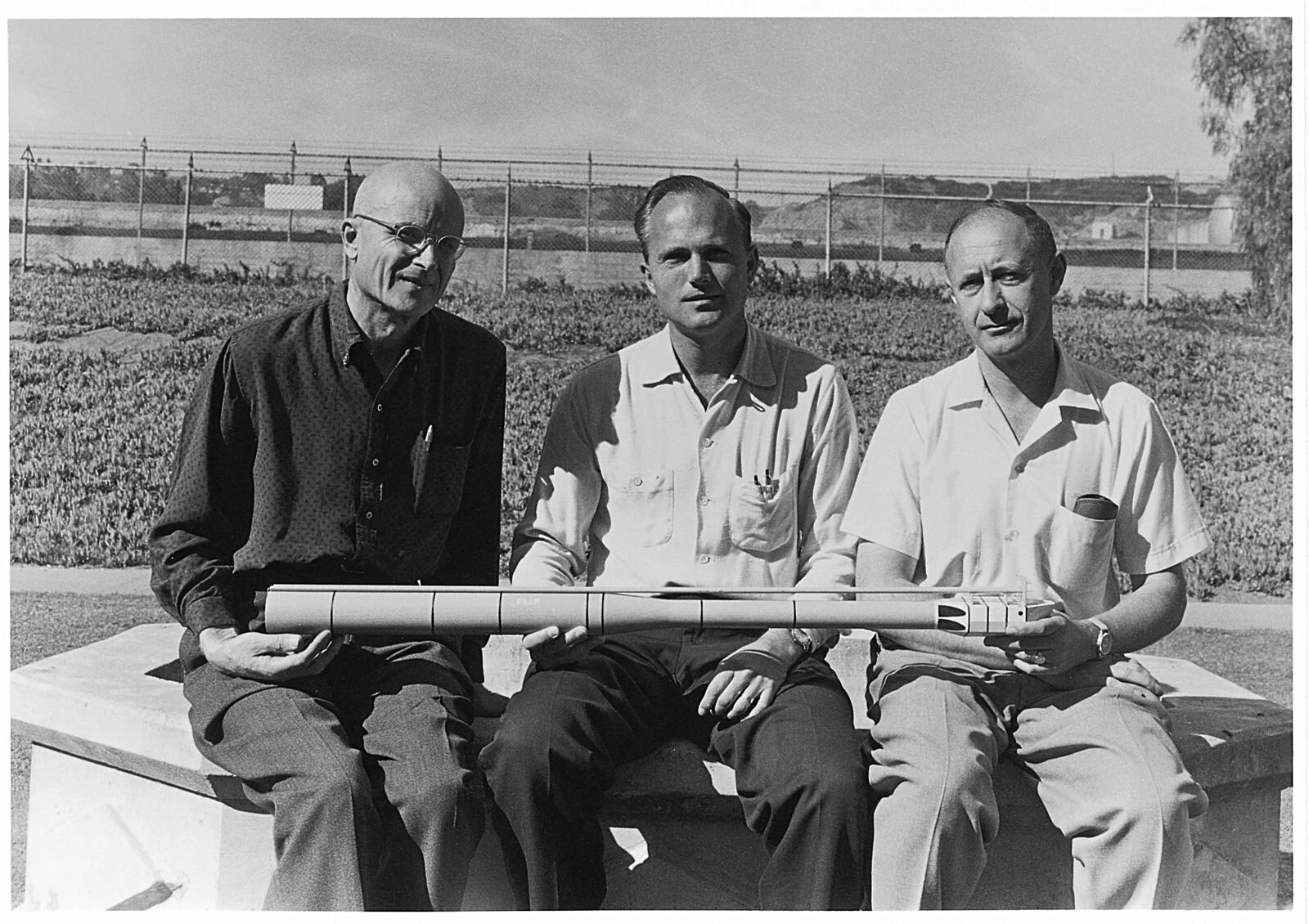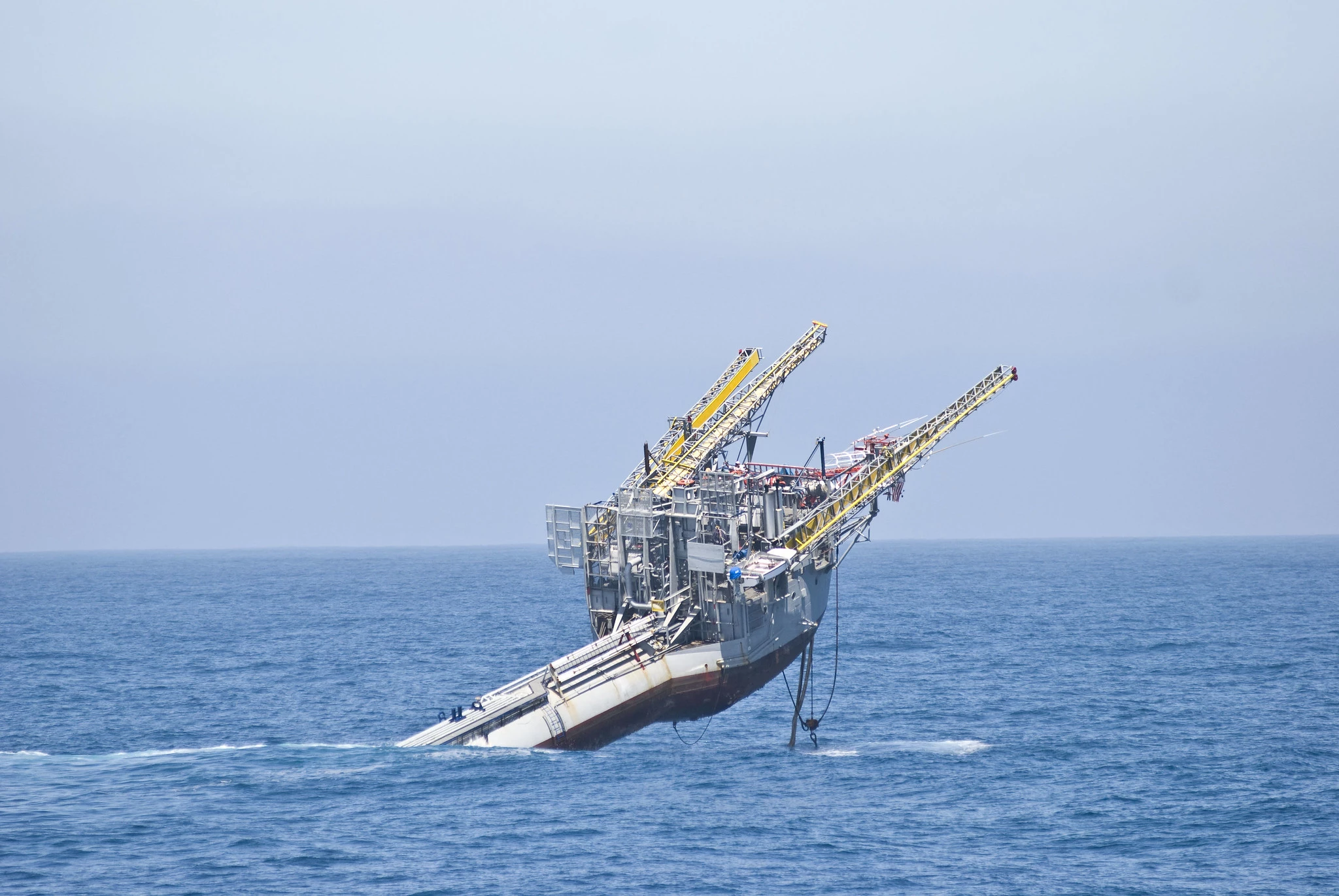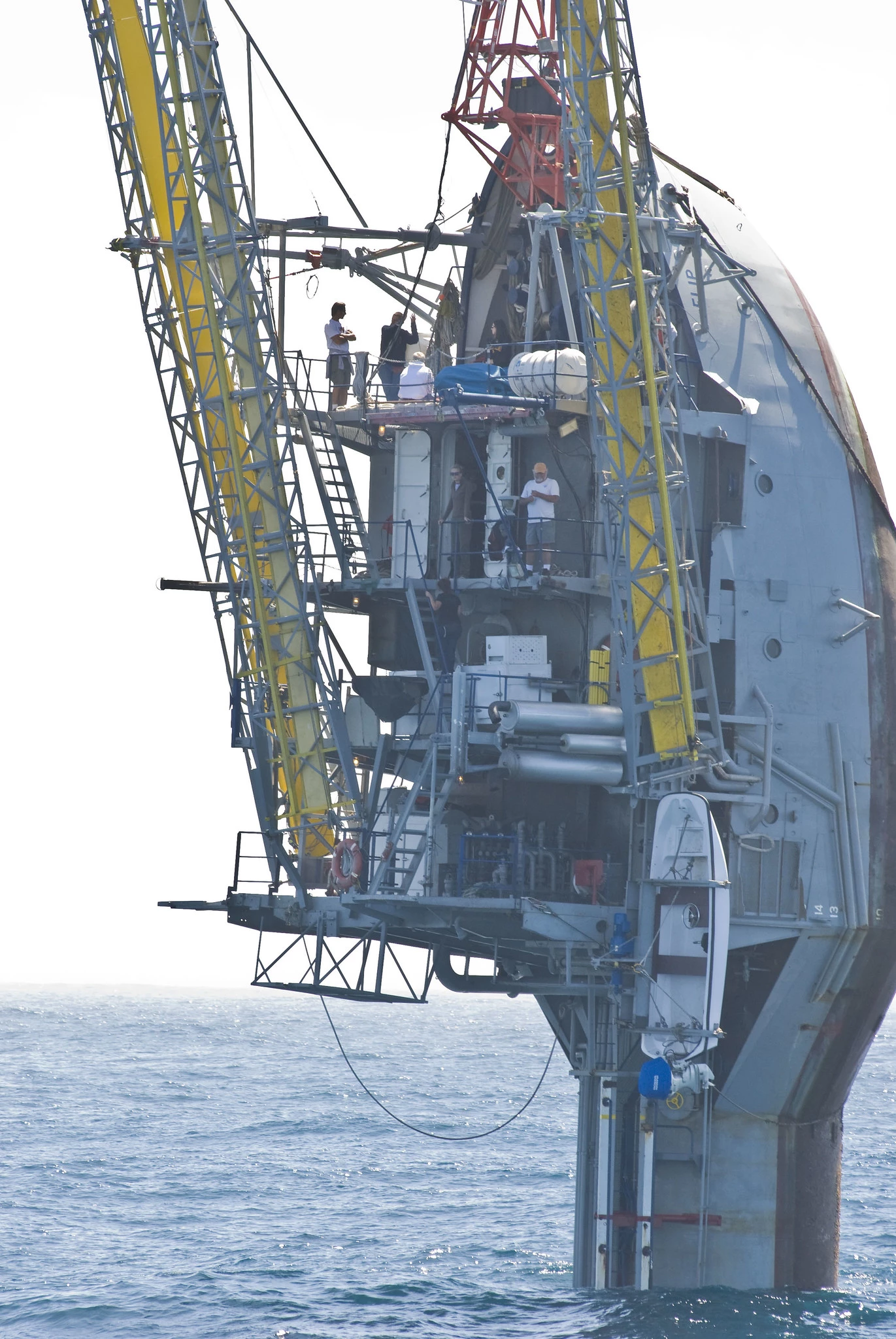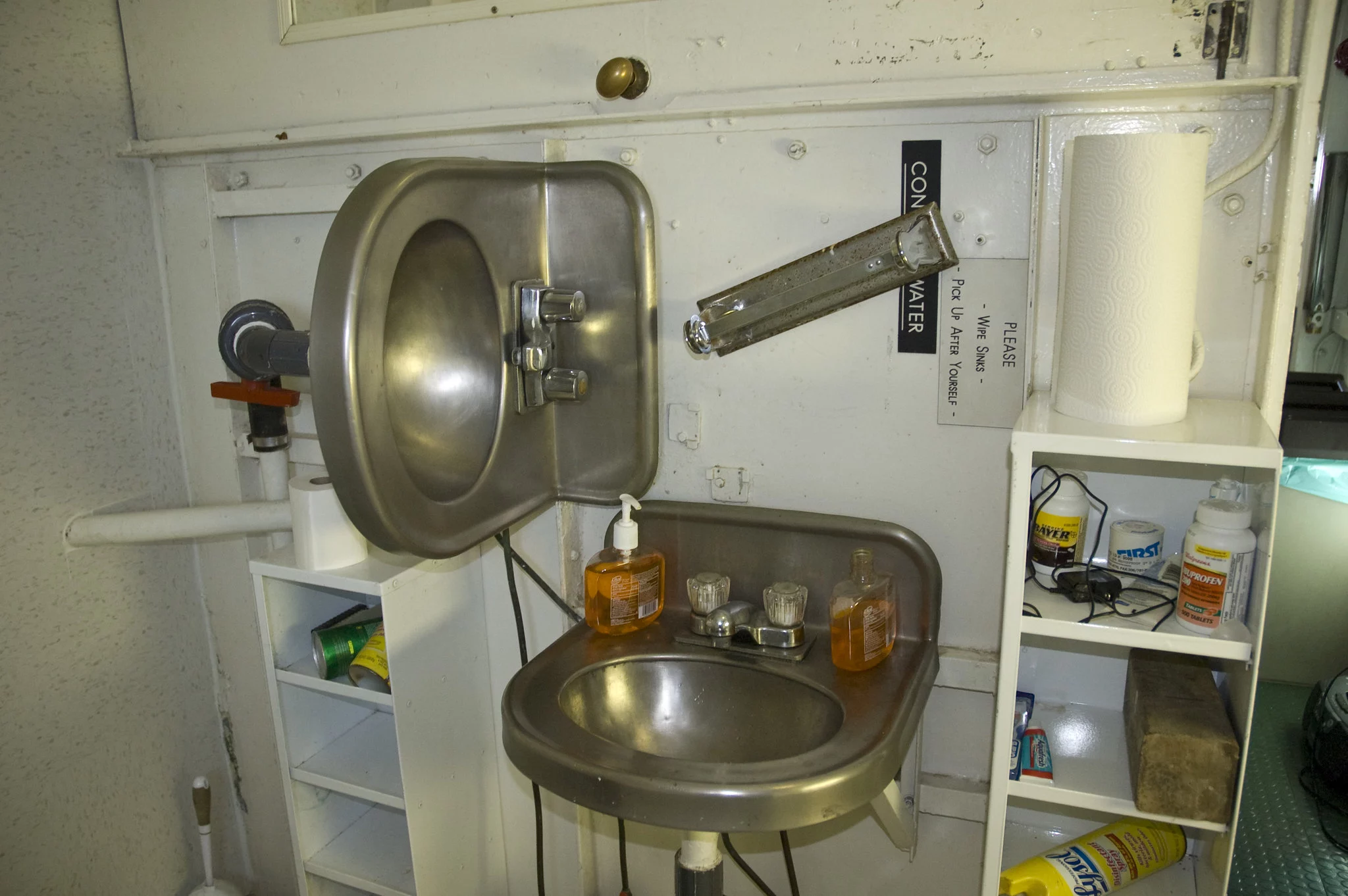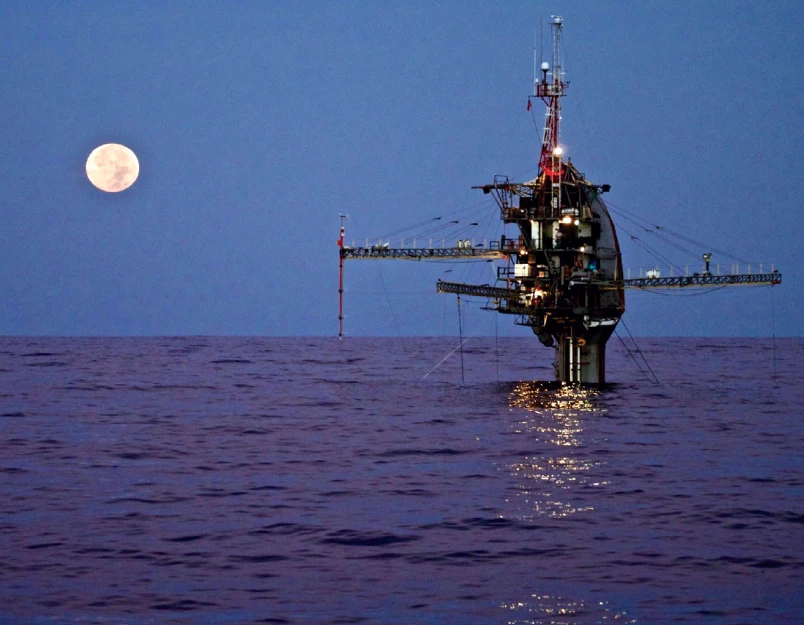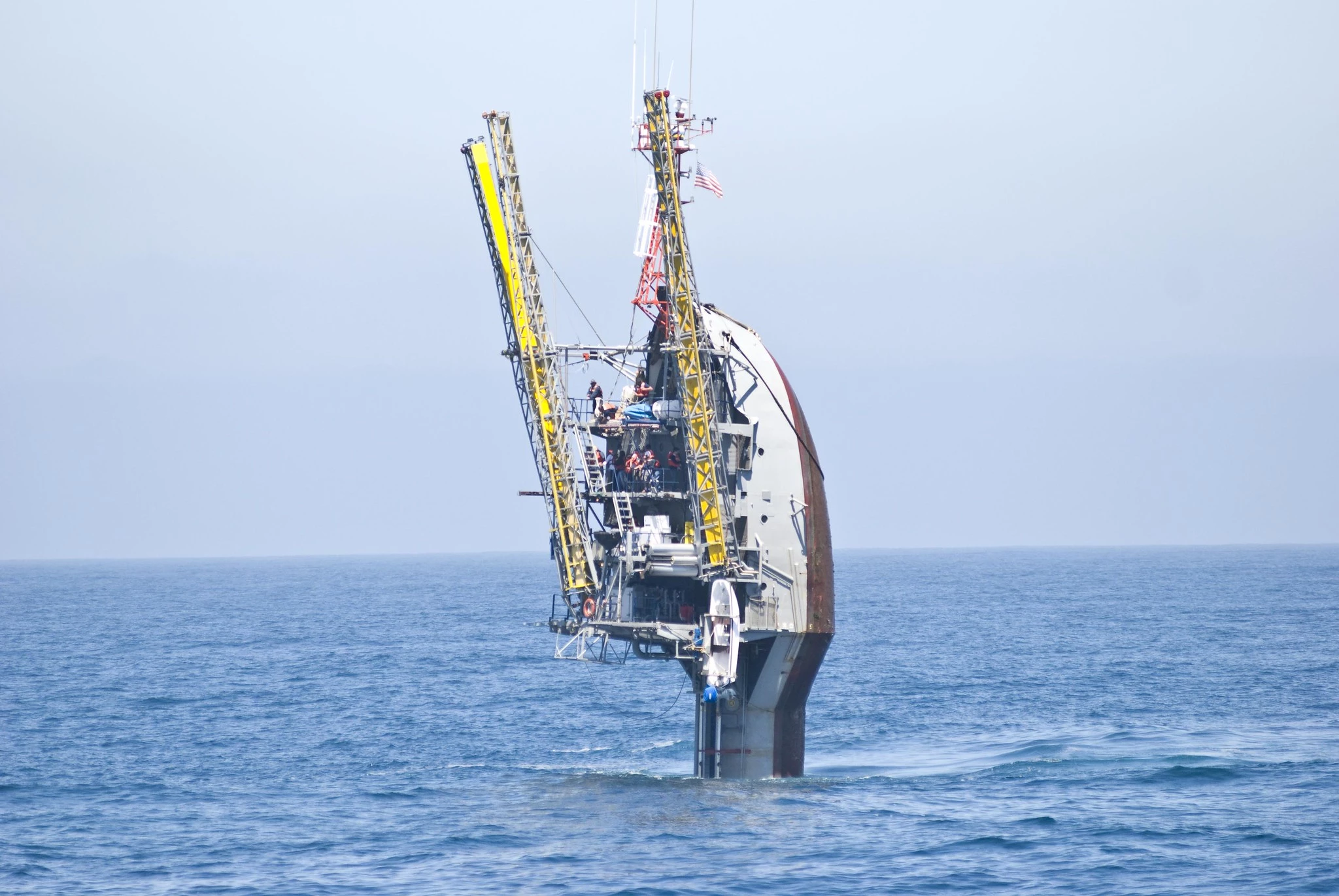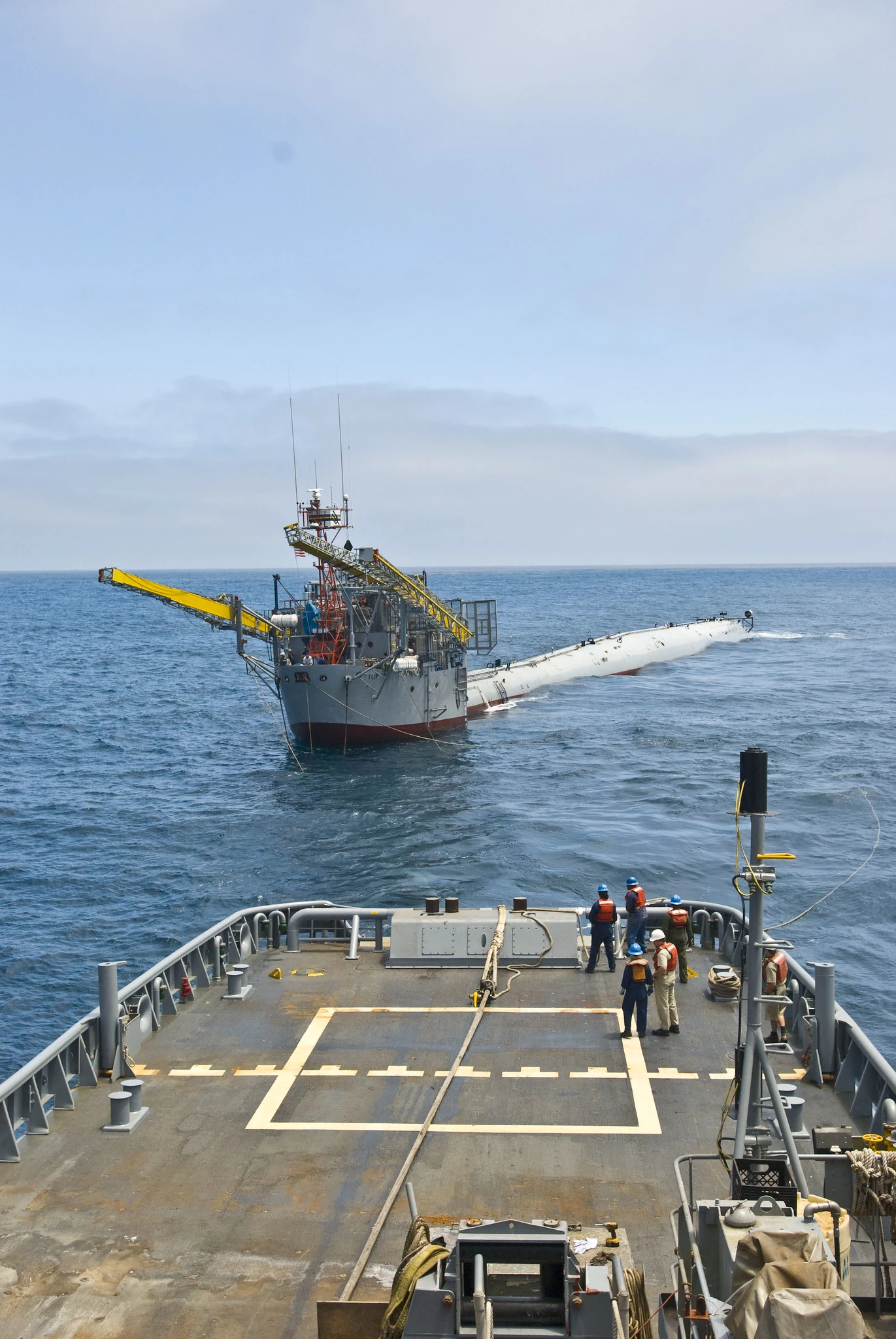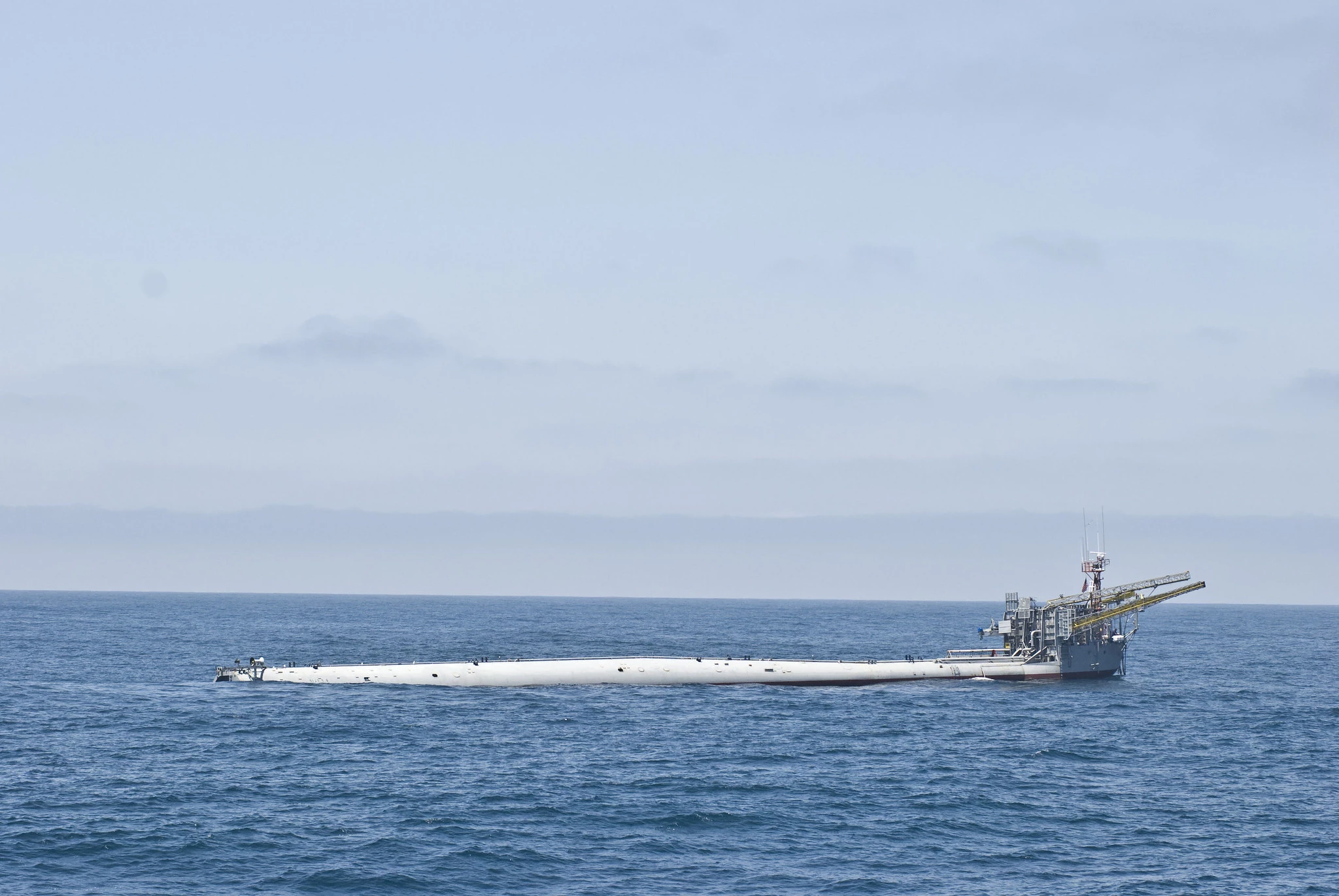There are few things in this world that are literally unique. One of these, in the true sense of the word, is the FLoating Instrument Platform (FLIP), which was a floating barge built for the US Navy that regularly sank itself on end for science.
If you went sailing off the US West Coast in the 1960s, you might have come across the alarming sight of a ship that looked as if it was going full Titanic and was about to disappear under the waves for good. As you changed course to offer assistance, you wouldn't see a flotilla of lifeboats or hear a small band playing Nearer My God to Thee. Instead, you'd probably be greeted by a man leaning bemusedly on an odd-looking rail.
Need help? No. Everything is fine.
It's a scenario that played out more than once in the over 60 years of FLIP. This one-of-a-kind research vessel looked odd enough when it was in port, but when it took to sea and set itself up to work, it seemed downright bizarre.
Displacing 700 gross tonnes and measuring 355 ft (108 m) long with a 26-ft (8-m) beam, FLIP looked like nothing so much as a giant gray stalk of steel asparagus with a conventional ship's bow slapped onto the narrow end. Even that bow looked odd through a pair of binoculars. There were four decks, but they were set 90 degrees in the wrong direction. There were also what looked like walls set on the deck and ladders flat on the deck plates.
FLIP couldn't set out to sea under its own power. Instead, it was a barge that had to be towed into position by a tug. Under tow, it only drew 12.6 ft (3.83 m), but when it was on station, a startling transformation took place.

With a whoosh from the thick aft end of FLIP, air would escape as tonnes of water poured in at a carefully controlled rate to prevent plunging. In minutes, the stern sank underwater and the vessel would quietly tip up. That 12-ft draft changed into a record-breaking 300 ft (91 m) as FLIP became a giant stick floating in the sea like a fantastically large spar buoy. Meanwhile, the decks in the forecastle (front to landlubbers) went from vertical to horizontal as the oddity became a floating laboratory.
Though it wasn't made public at the time, the reason for all this was to help the US Navy develop its new UUM-44 SUBROC (SUBmarine ROCket) anti-submarine weapon. The goal of this frightening little beauty was to allow a submarine to destroy an enemy sub at long distance by firing a rocket out of a torpedo tube. Once in the air, the rocket would deploy a depth charge at a range of up to 34 miles (55 km). This charge contained a 25-kiloton nuclear warhead that only had to land in the approximate vicinity of the target to destroy it.
It's one thing to come up with such an idea. It's another thing to figure out how to make it work. The fly in the ointment was that the US Navy didn't have the ability to gather the underwater data needed to see how SUBROC was performing during tests.

At its simplest, the problem was one of listening to the noises SUBROC made while being launched and the warhead reentering the water. From this, a lot can be deduced. Unfortunately, the sea is mind-bogglingly complicated in terms of acoustics. There are reflections off the uneven and sloping sea bottom, off layers of water at different temperatures, and changes in salinity.
This is often called acoustical twinkling, which is a decent analogy. When we look at stars in the sky, we don't see them as unshifting points of light. Instead, the Earth's atmosphere causes them to twinkle. In a similar way, the factors underwater causes sound to act in a similar way.
To deal with this, scientists tried studying underwater sound using ships and submarines. Ships on the surface weren't much help – and submarines weren't much better, either on the surface or at depth, because they couldn't get optical or electromagnetic-bearing reference on the sound source. In other words, they didn't know where the sound was actually coming from.
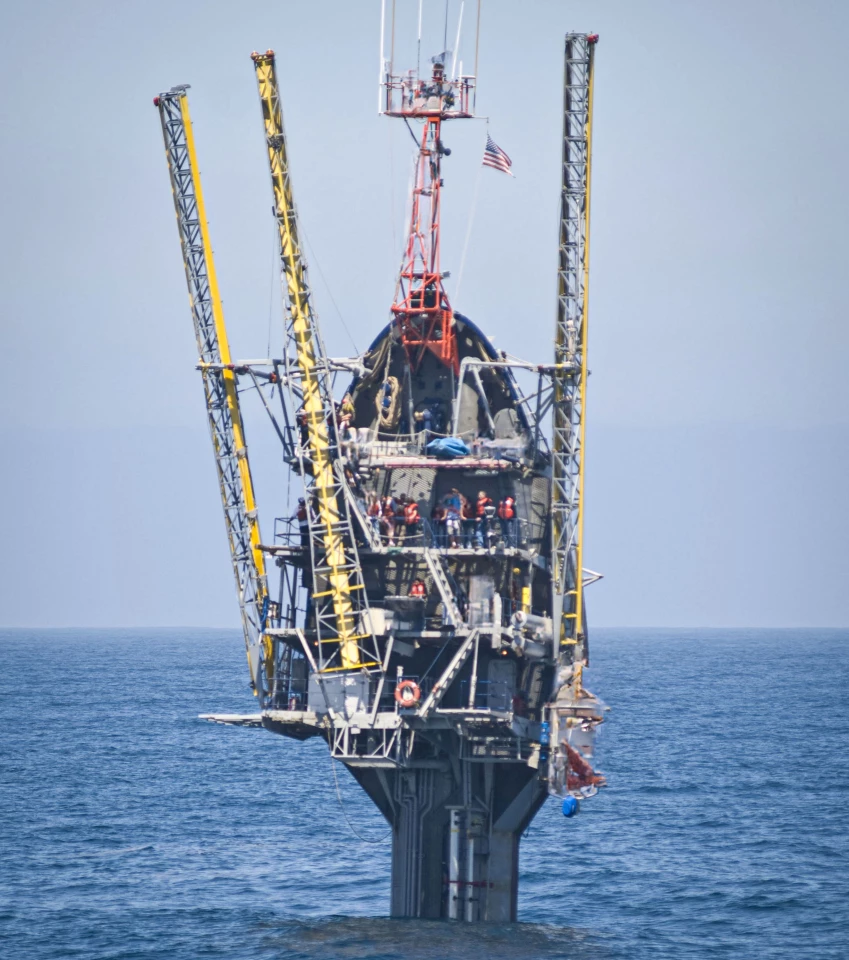
They toyed with the idea of setting a submarine on end, but this was quickly shot down because of the huge pressure difference between bow and stern of the boat. What was really needed was a platform that could gather sound at many different depths, would remain very steady in rough seas, and was silent, so it wouldn't interfere with the measurements.
The answer came in 1960 when Allyn Vine of the Woods Hole Oceanographic Institution saw a Navy mop floating in the water and saw how steady the handle stayed.
Two years of design work, tank tests, and US$600,000 later, the result was FLIP, which was launched at the Gunderson Brothers Engineering Corporation yard in Portland, Oregon on June 22, 1962.

Being able to flip at right angles allowed an array of sensors to be set underwater on a very steady platform that could largely ignore the sea around it. There was even a shaft running the length of the hull where a shaft of polarized light allowed the crew to precisely measure any distortions of the vessel due to wave action.
Of course, all this flipping made life aboard a bit odd. While being towed, it was like being in a fun house, with doors and bulkheads being where they shouldn't and wash-stands halfway up the wall. And of course, the plumbing didn't much care for being in two positions, so chemical toilets were the rule of the day – although this was later changed during refits.
In addition, the two 200-bhp diesel engines used to power the platform were set on trunnions with flexible exhaust couplings so they always remained horizontal because flipping such engines makes them very unhappy.

With a crew of five and up to 11 scientists on board, FLIP would venture out from its base at the Scripps's Marine Physical Laboratory in San Diego, California, staying mainly on the coast, but sometimes going to Hawaii or the US East Coast.
It would gather data on wave height, acoustic signals, water temperature and density, as well as meteorological data as it was used to study geophysics, meteorology, physical oceanography, and other scientific fields. Booms were also installed to allow additional instruments to be lowered as needed.
FLIP's last research cruise was in 2017. While a new refit was considered, the US$8-million price tag was judged too much and it left service in August 2023 when it was scrapped – a rather ignominious end for such a remarkable vessel.
But that's the story of ships: today, an incredible story of innovation and eccentricity. Tomorrow, so many teaspoons.
Source: Scripps Oceanography



